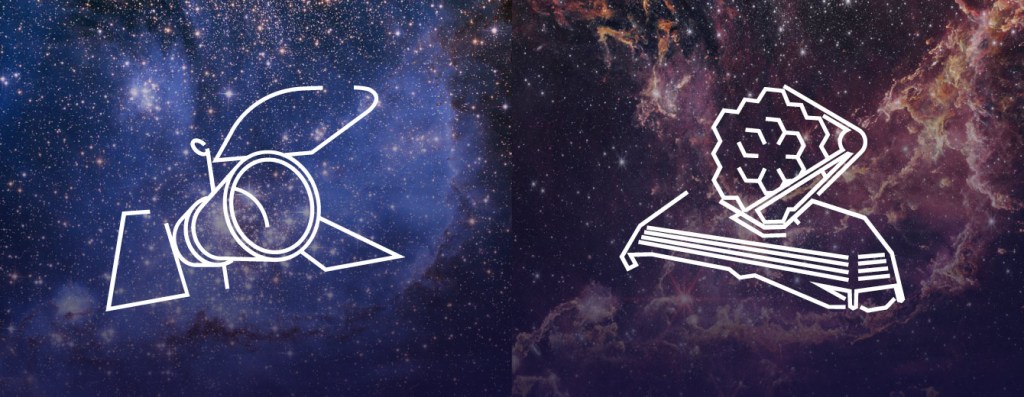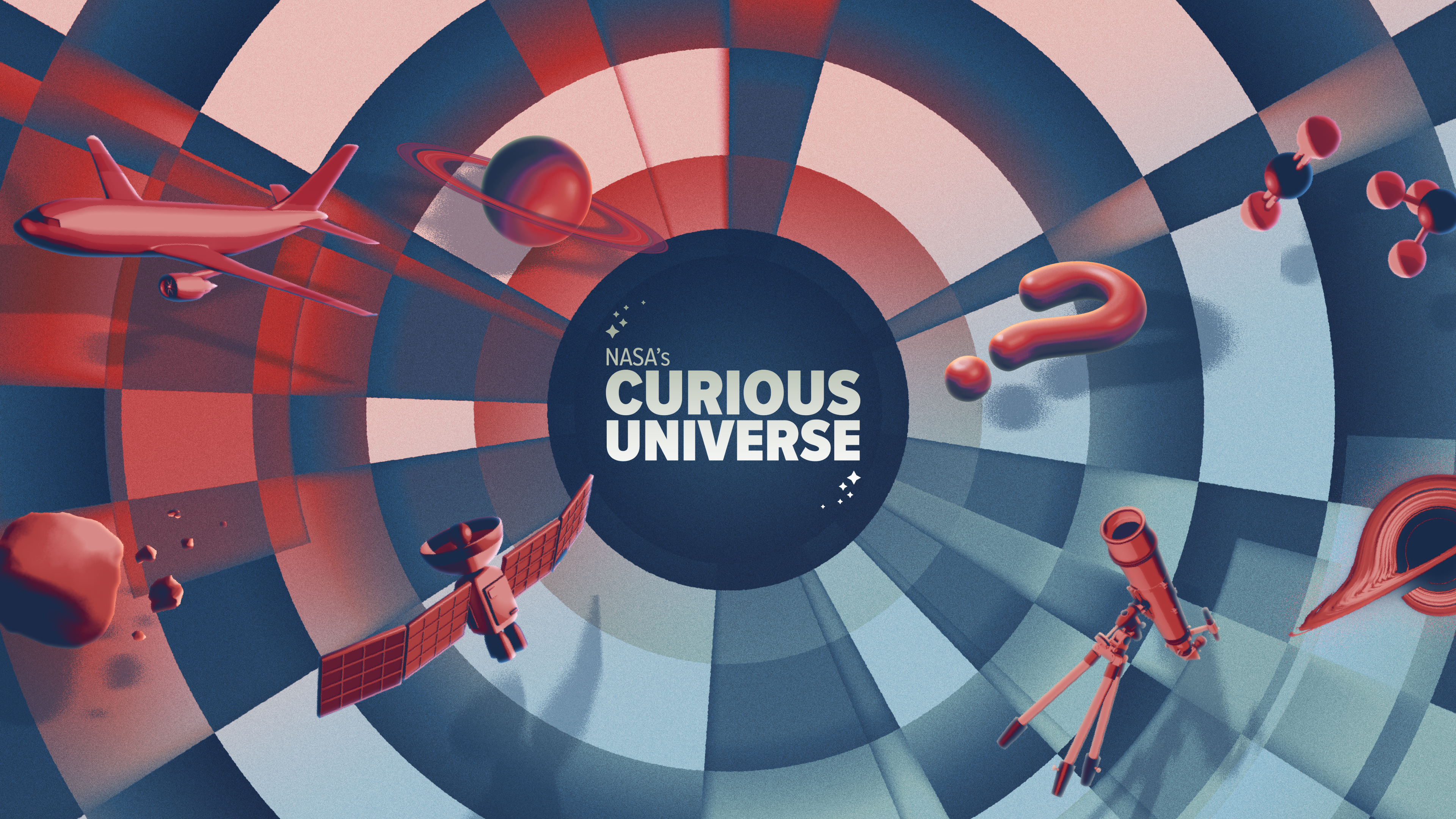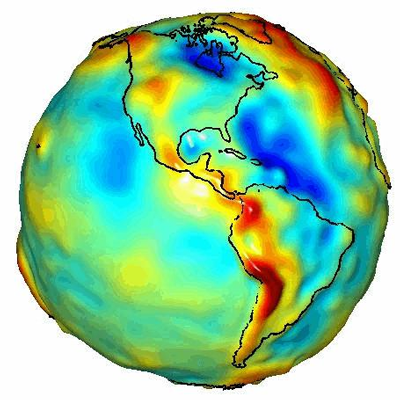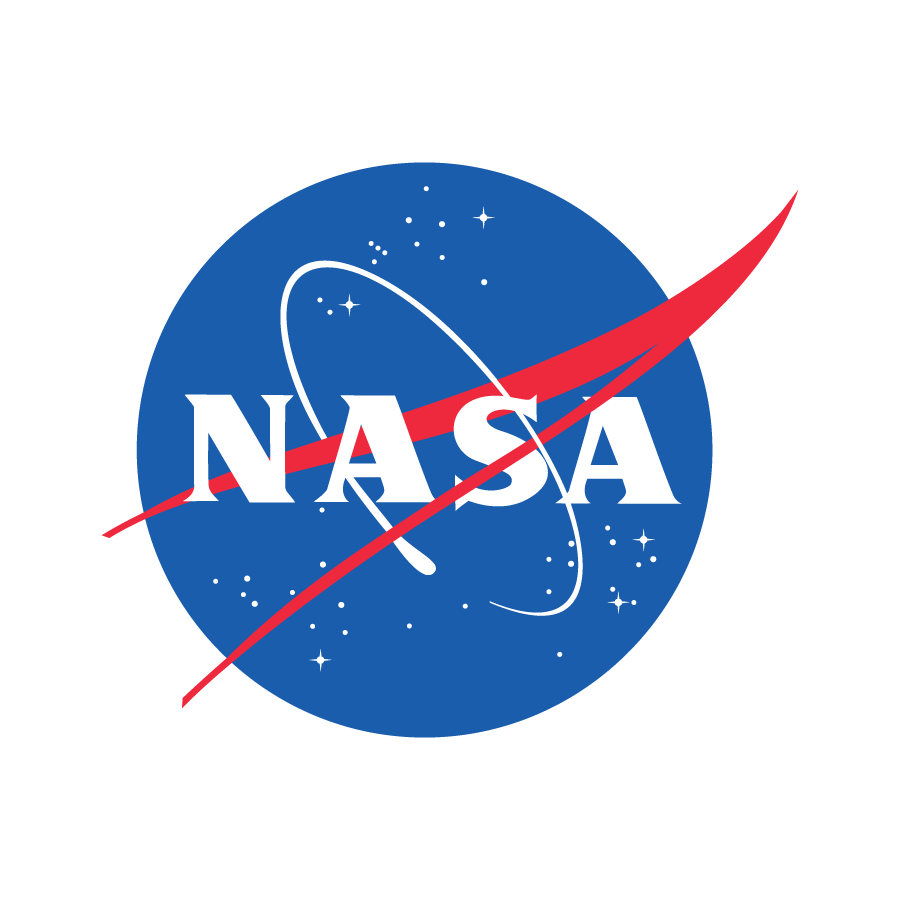WEBB'S LATEST
News, Imagery, Blogs and more.
Latest News
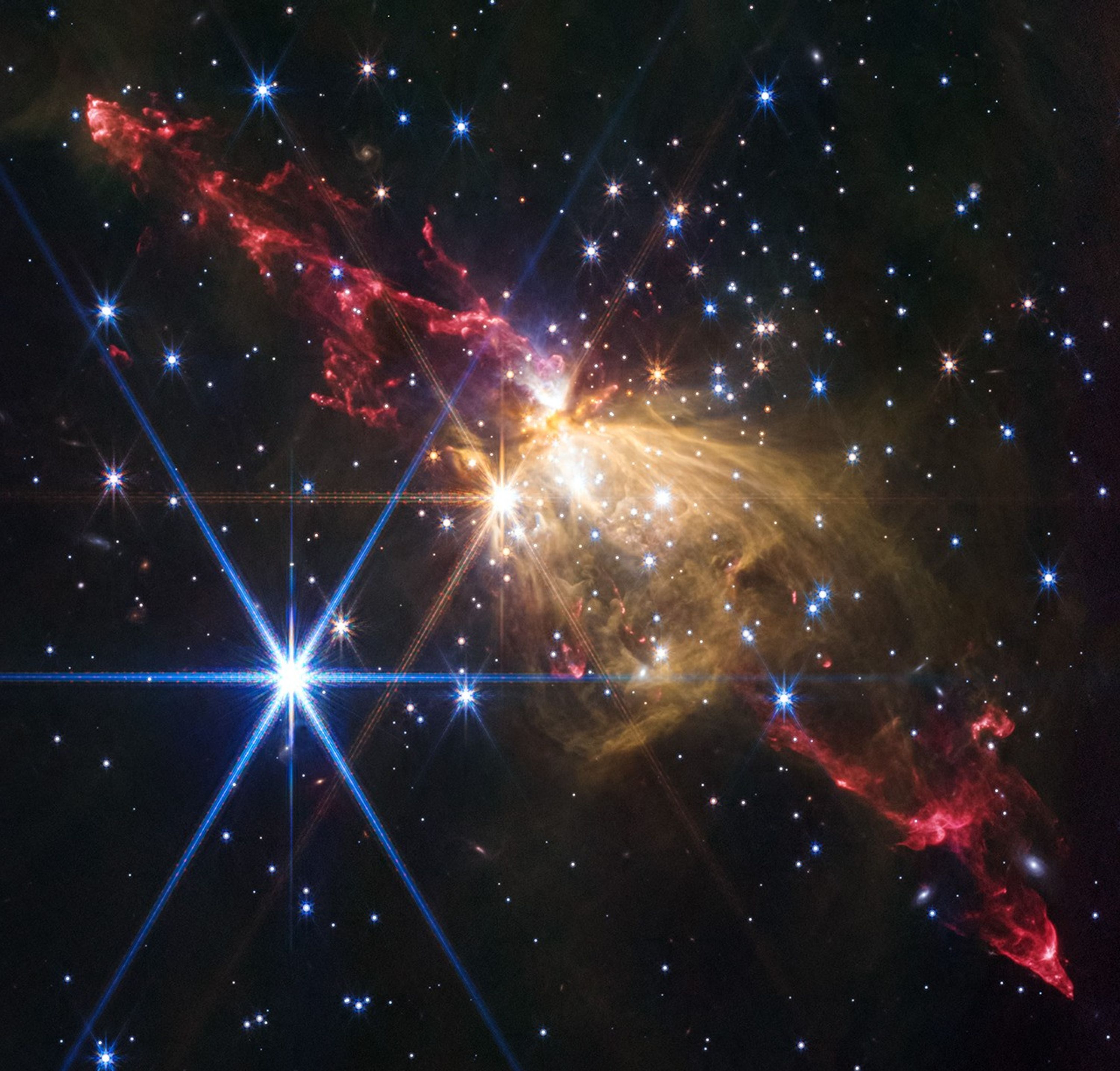
NASA’s Webb Observes Immense Stellar Jet on Outskirts of Our Milky Way

NASA Study: Celestial ‘Accident’ Sheds Light on Jupiter, Saturn Riddle

NASA Webb Looks at Earth-Sized, Habitable-Zone Exoplanet TRAPPIST-1 e

Glittering Glimpse of Star Birth From NASA’s Webb Telescope
Search Webb News and Imagery
Search and sort the news feed with the controls immediately below.
Type
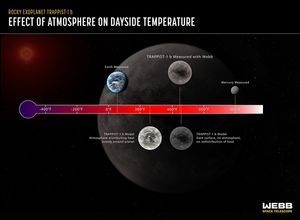
Researchers can determine whether or not a tidally locked rocky planet has an atmosphere by comparing its measured temperature to…
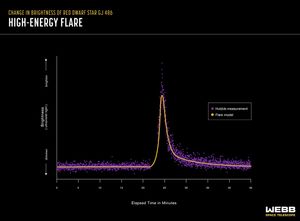
This light curve shows a flare of bright ultraviolet light emitted by a red dwarf star. Stars that appear calm…
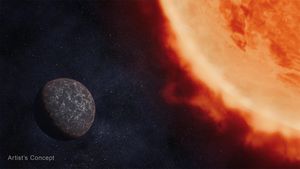
Artist’s concept of a bare rocky planet orbiting a red dwarf star.
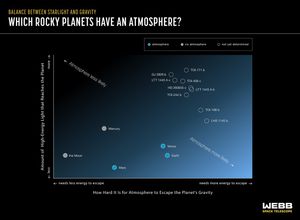
Massive planets that receive less high-energy starlight are more likely to have atmospheres than small planets receiving more radiation. Webb…
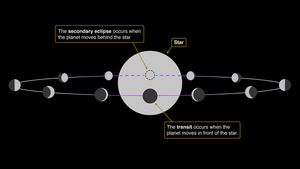
A transit occurs when a planet moves between its star and the telescope, blocking some of the starlight. A secondary…
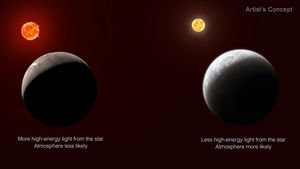
All other things being equal, the more high-energy light a planet receives from its star, the less likely it is…
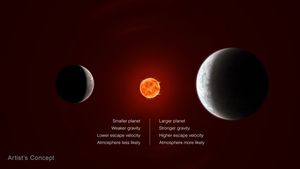
If two planets are the same in every other way, the one with a stronger gravitational pull is more likely…
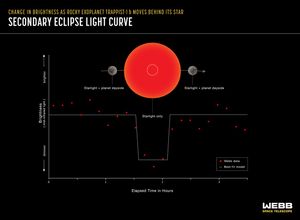
A secondary eclipse light curve shows the decrease in brightness of a star-planet system as the planet moves behind the…
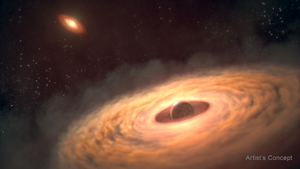
NASA’s James Webb Space Telescope has provided the first direct measurements of the chemical and physical properties of a potential…
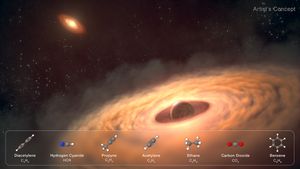
An artistic rendering of a dust and gas disk encircling the young exoplanet (lower right), CT Cha b, 625 light-years…
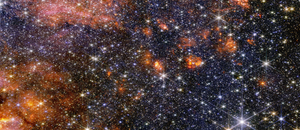
NASA’s James Webb Space Telescope has revealed a colorful array of massive stars and glowing cosmic dust in the Sagittarius…

Stars, gas and cosmic dust in the Sagittarius B2 molecular cloud glow in near-infrared light, captured by Webb’s NIRCam instrument.…
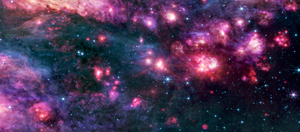
Webb’s MIRI instrument shows the Sagittarius B2 region in mid-infrared light, with warm dust glowing brightly. Only the brightest stars…
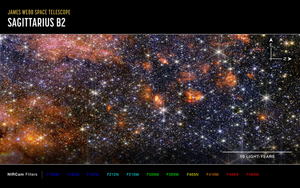
This image of the Sagittarius B2 (Sgr B2) molecular cloud, captured by the NIRCam (Near-Infrared Camera) instrument on NASA’s James…
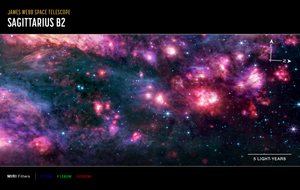
This image of the Sagittarius B2 (Sgr B2) molecular cloud, captured by MIRI (Mid-Infrared Instrument) on NASA’s James Webb Space…
Latest Webb Blogs
Webb's Blog offers an insider's point of view covering a variety of topics that include on going operations as well as exciting Webb science images/spectra that are not yet peer reviewed and therefore not released as NASA feature articles ( IE the above official Webb News Feed). Blog posts are often co-authored by scientists and engineers and offer unique insights. <strong>Search and sort the news feed with the controls immediately below.</strong>
Filters
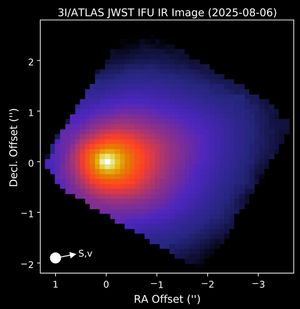
NASA’s James Webb Space Telescope observed interstellar comet 3I/ATLAS Aug. 6, with its Near-Infrared Spectrograph instrument. The research team has…
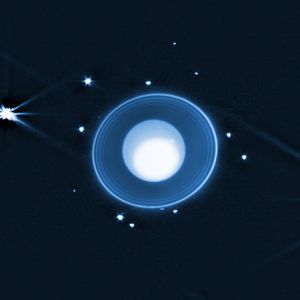
Editor’s Note: This post highlights data from Webb science in progress, which has not yet been through the peer-review process.…
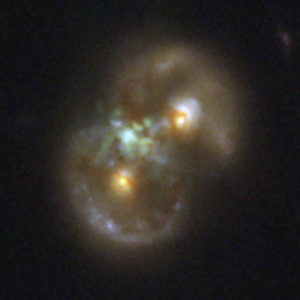
Editor’s Note: This post highlights a combination of peer-reviewed results and data from Webb science in progress, which has not…

While asteroid 2024 YR4 is currently too distant to detect with telescopes from Earth, NASA’s James Webb Space Telescope collected one…
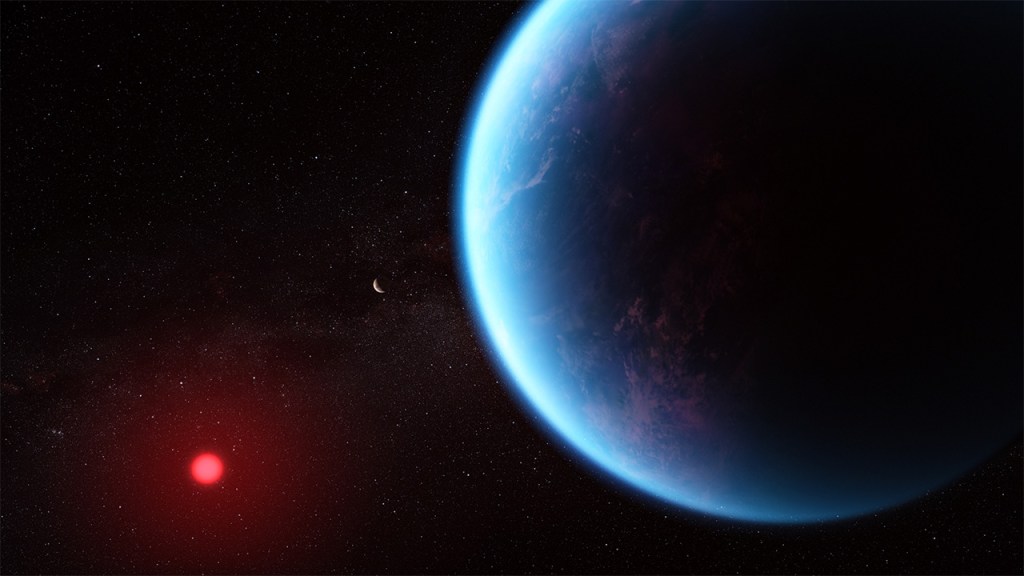
This artist’s concept shows what exoplanet K2-18 b could look like based on science data. K2-18 b, an exoplanet 8.6…
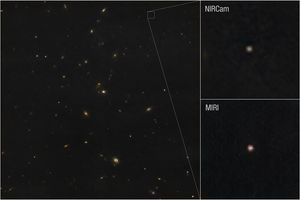
Editor’s Note: This post highlights data from Webb science in progress, which has not yet been through the peer-review process. These…
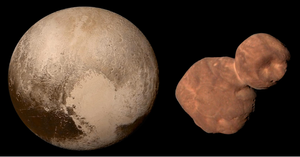
Trans-Neptunian objects (TNOs) are icy bodies ranging in size from Pluto and Eris (dwarf planets with diameters of about 1,500…

NASA’s James Webb Space Telescope is the largest and most powerful telescope ever launched to space. Its mirror is composed…
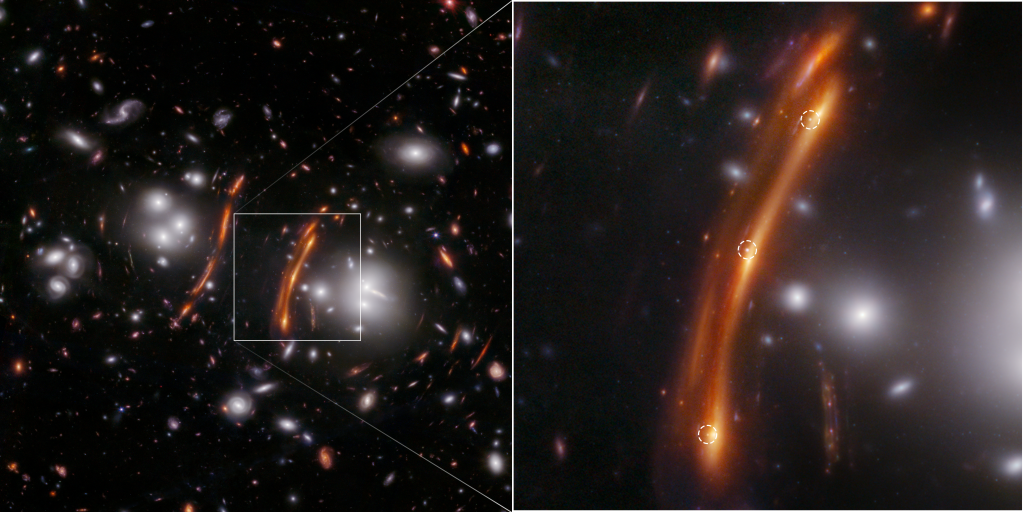
Editor’s Note: This post highlights data from Webb science in progress, which has not yet been through the peer-review process. Measuring…
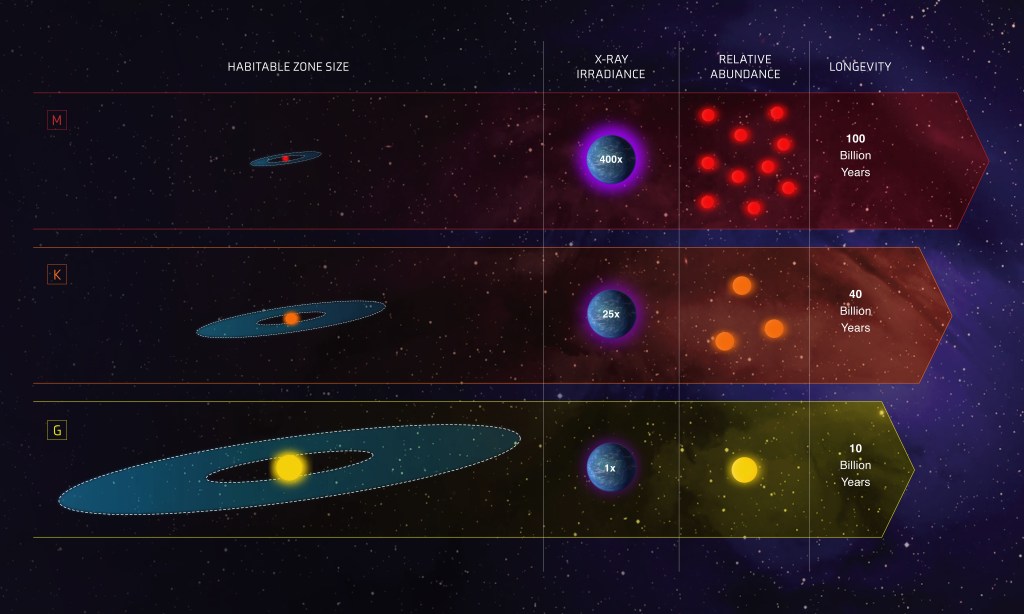
Exoplanets are common in our galaxy, and some even orbit in the so-called habitable zone of their star. NASA’s James…
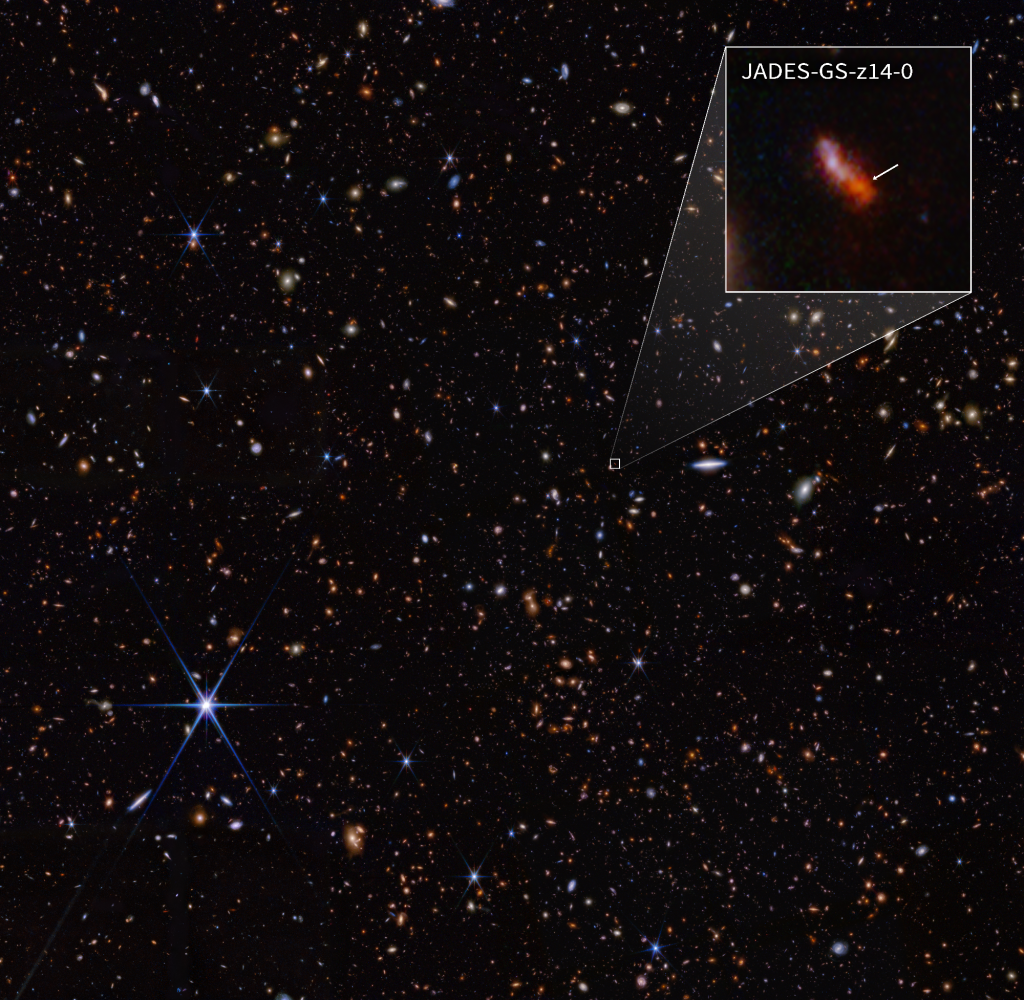
Editor’s Note: This post highlights data from Webb science in progress, which has not yet been through the peer-review process.…
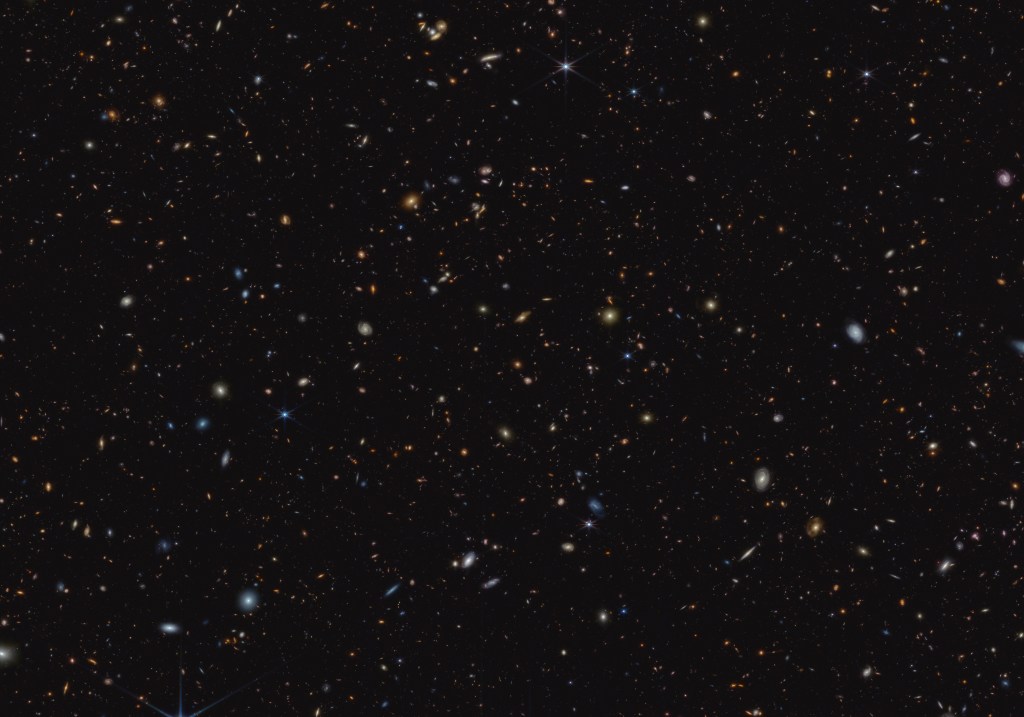
NASA's James Webb Space Telescope is delivering on its promise to explore the farthest reaches of the universe, looking back…

Editor's Note: This post highlights data from Webb science in progress, which has not yet been through the peer-review process.…

One of NASA's James Webb Space Telescope's science goals is to understand how galaxies in the early universe formed and…

NASA's James Webb Space Telescope observed the exoplanet WASP-80 b as it passed in front of and behind its host…
Webb's Social Media
Webb Social Media (offsite) : X | Instagram | Facebook | Youtube | Flickr
What is Webb Observing?
See current, upcoming and recent past observations scientists are making with the Webb Space Telescope. View details about each observation's science focus areas, the instruments used and more.
View the Tool